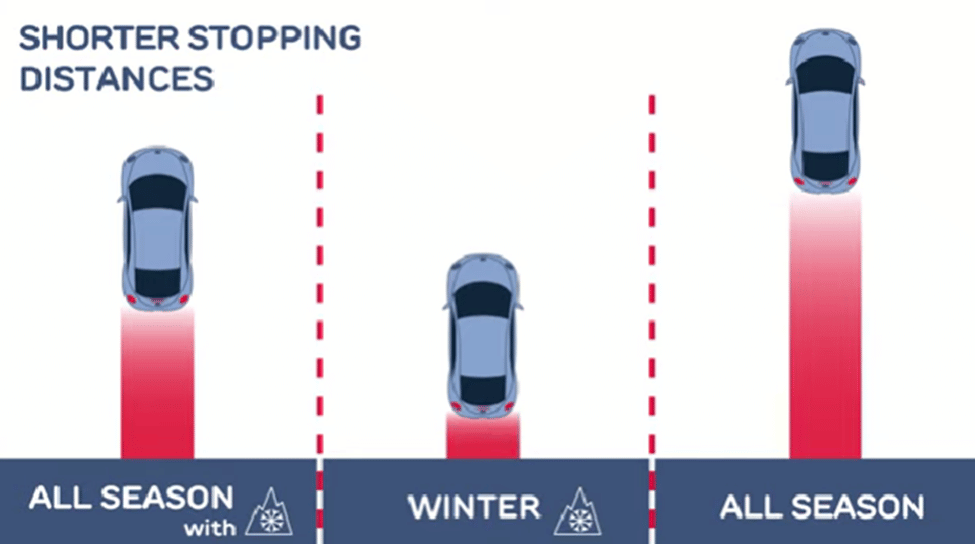Can Michelin All-Weather Tires Keep You Safe In Ontario’s Snowbelt?
August 5, 2022
Tires

Can Michelin all-weather tires stand up to Ontario’s snow belt?
A snowbelt is a region that receives heavy snowfall, often as the result of lake-effect snow, which can create blizzard-like conditions that push dedicated snow tires to their limits.
In Ontario, the snow belt region includes the eastern shore of Lake Superior from Sault Ste. Marie northward to Wawa, as well as the eastern and southern shores of Lake Huron and Georgian Bay from Parry Sound to London.
If you live in one of these areas, today’s post is for you! Read on to learn whether Michelin all-weather tires meet your needs, or contact your local TIRECRAFT to schedule a free consultation with a local tire tech.
Can Michelin All-Weather Tires Keep You Safe In The Snow Belt?
Let’s start by reviewing all-weather research and regulations:
- In all-weather tire tests by the Automotive Protection Association, Michelin all-weather tires consistently earn excellent scores, with the CrossClimate placing among the top-4 picks for winter 2019-2020, while also beating out its top competitors in summer weather braking tests on wet and dry pavement.
- As per the Motor Vehicle Safety Act (MVSA), all-weather tires must meet the standards stipulated by the ASTM F-1805 Driving Traction Test on a medium packed snow surface, which is the same standard to which winter tires are held.
- Though they are commonly perceived as a “middle ground” between all-season tires and dedicated winter sets, all-weather tires actually outperformed several snow tires in ice braking and traction tests by Consumer Reports.
As these test results indicate, all-weather tire design has come a long way, so much so that many modern products can now compete with middle-of-the-pack snow tires, while still offering four-season performance and service savings.
So does that mean Michelin all-weather tires are enough to keep you safe this winter? Maybe, but that depends on you, and they’re still not the safest option on the market.
According to Tire Rack tire testers, “while non-winter tires featuring the three-peak mountain snowflake symbol (3PMSF) provide additional longitudinal snow traction beyond what all-season (M+S) tires not bearing the symbol can deliver, they do not match the capability of a true winter tire in all adverse weather conditions.”
Echoing these findings, a new video published by the Tire and Rubber Association of Canada (TRAC), researchers ranked all-season tires, all-weather tires, and winter tires as “good, better, and best,” respectively.

Michelin all-weather tires offer “better” winter traction, but dedicated winter tires work best!
Ultimately, the only way to know for sure whether Michelin all-weather tires meet your needs is to book a free needs assessment at your local TIRECRAFT. Our friendly all-weather tire techs will get to know about your vehicle type, driving demands, and weather conditions, then recommend tire products and categories based on your needs.
To book your free needs assessment, use the Find a TIRECRAFT tool on our website.
Back

